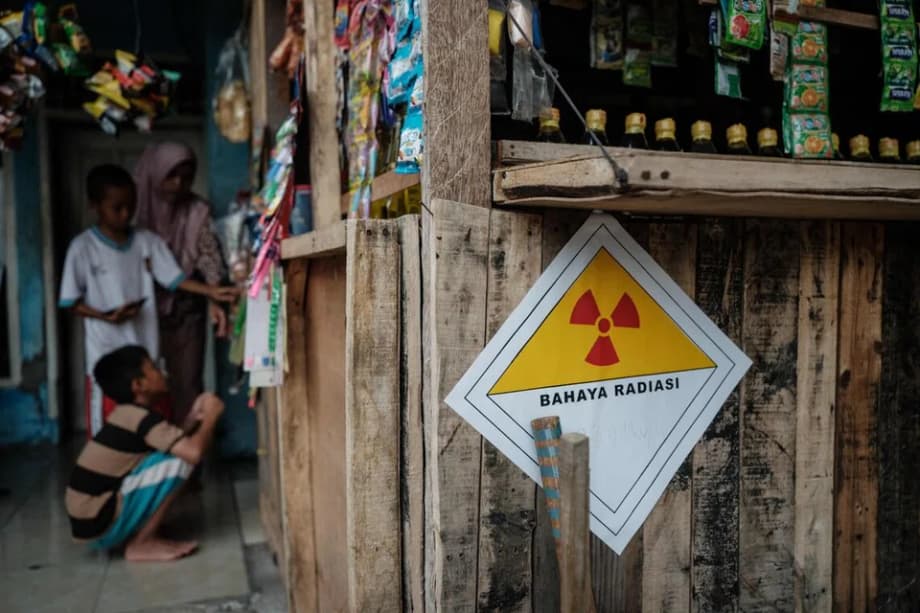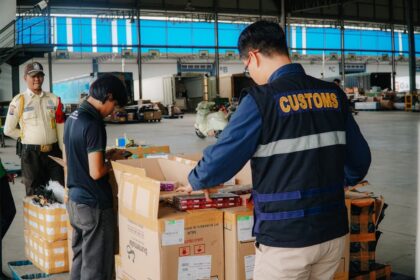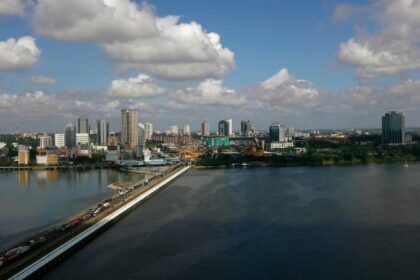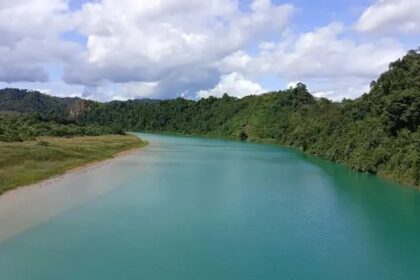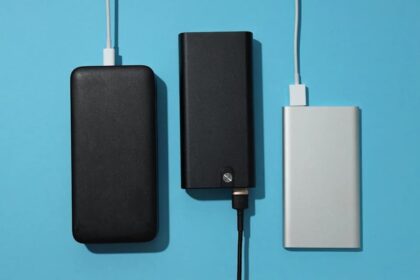How a radioactive shipment linked the Philippines and Indonesia
The Philippines has launched a probe into a shipment of zinc powder that tested positive for a radioactive isotope after arriving in Indonesia, a discovery that Indonesia says briefly exposed nine people who have since recovered. Science and Technology Secretary Renato Solidum Jr has said the event appears to be an isolated contamination, with no indication of widespread risk to the public. Philippine authorities say the containers will be returned to Manila in late October, remain unopened during transit, and showed no detectable radiation outside the cargo. Crews onboard are not considered at risk. After arrival, technical teams plan instrument checks and secure storage as the government works to map the chain of custody and identify the point of contamination.
- How a radioactive shipment linked the Philippines and Indonesia
- What investigators uncovered in Indonesia
- How a radioactive isotope can ride the supply chain
- Philippine response and the search for the zinc source
- Food export fallout and regulatory actions
- Why scrap metal and sealed sources pose recurring challenges
- Key Points
Indonesian officials had earlier intercepted containers at Tanjung Priok Port in North Jakarta, including nine units of zinc concentrate powder that triggered radiation alarms. The Indonesian Nuclear Energy Regulatory Agency, known as Bapeten, confirmed the presence of cesium 137 and recommended repatriation to the Philippines. During the same period, stepped-up screening prompted by United States alerts led to detections of trace cesium 137 in frozen shrimp shipments and later in cloves from Indonesia, which prompted recalls and new import controls. Indonesian authorities say all nine people who were exposed at port handling recovered.
The shipment slated for return to Manila was arranged by Zannwann International Trading, a company with Chinese ownership that operates out of Meycauayan City in Bulacan province, according to Philippine officials. An interagency group composed of the Department of Science and Technology, the Philippine Nuclear Research Institute, the Department of the Interior and Local Government, the Philippine Ports Authority, the Bureau of Customs, and the Department of Health Bureau of Quarantine has been activated. The team is coordinating with the International Atomic Energy Agency to align testing and safety steps. Parallel checks are focusing on the domestic steel cycle because facilities that process scrap generate by products such as zinc dust that may enter export streams.
What investigators uncovered in Indonesia
Investigators in Indonesia say the center of the episode lies in the Cikande industrial estate in Serang, Banten. A steel maker, PT Peter Metal Technology, which uses imported scrap as feedstock, is suspected of emitting particles that settled on nearby surfaces. A seafood processor, PT Bahari Makmur Sejati, operates less than two kilometers from the steel plant. Indonesian officials said airborne transmission likely carried cesium 137 particles from the steel operation to packaging material and to the interior of shipping containers. The government designated the area a serious incident zone to speed up containment and decontamination while keeping food safety checks in place.
At the height of the checks, authorities at Tanjung Priok identified multiple containers with contamination, among them a group of scrap metal boxes from overseas and nine containers of zinc concentrate from the Philippines, according to public briefings by Indonesian officials. Several containers were ordered back to their origin points as a precaution. Indonesia formed a task force that is working with United States officials and the International Atomic Energy Agency to share data and guide cleanup.
Industrial site at the center
Senior advisers to the Indonesian government traced the likely contamination pathway to the steel plant in the Cikande estate. The working model is straightforward. If a sealed source of cesium chloride enters a scrap batch and is smelted, the compound can reach temperatures where it vaporizes. Vapors and tiny particles can move with air currents, settle on equipment and walls, and be picked up by products or packaging in neighboring facilities. The pattern of exposure found on shrimp packaging and inside containers near Cikande aligns with that pathway.
Radiation monitoring and cleanup
Indonesia’s nuclear regulator deployed survey teams, installed barriers, and began targeted decontamination inside the designated zone. Officials say food safety systems remain in place and that authorities are working to localize and remove affected material. The government also moved to re export contaminated scrap and to examine the role of shipping containers, since boxes that once carried contaminated scraps could later be loaded with food, a scenario that complicates risk control.
How a radioactive isotope can ride the supply chain
Cesium 137 (Cs 137) is an artificial radionuclide produced in nuclear fission. It is used in medical devices and industrial gauges and is also a legacy product of past weapons testing and reactor operations. The isotope emits high energy gamma rays and has a half life of about 30 years, which means it remains detectable for decades. In normal use, sealed sources keep cesium immobilized. Trouble begins when a source is lost or stolen and later enters the scrap stream. If that source is melted in a steel furnace, cesium can volatilize and spread as aerosols or dust. Those particles can adhere to scrap, surfaces, pallets, and container interiors. Without careful screening, the contamination can hitch a ride far from the original site.
What Cs 137 is and how exposure works
Exposure can occur in several ways. External exposure happens when gamma rays from Cs 137 pass through the body. Internal exposure happens when a person inhales or ingests contaminated dust. Acute high doses can cause radiation sickness and burns. Long term low dose exposure can raise the risk of cancer. Food regulators use activity concentration, measured in becquerels per kilogram, to judge risk. The United States Food and Drug Administration applies a derived intervention level of 1,200 Bq per kg for Cs 137 in food. In the current episode, testing described by authorities found 68 Bq per kg in one shrimp shipment and 732 Bq per kg in one clove sample. Those values are below the FDA intervention level, yet repeated exposure can pose a potential risk and any detection triggers close scrutiny.
How metals and containers can spread contamination
Scrap sorting systems are designed to screen out radioactive sources at yards and ports. Even with those systems, orphan sources occasionally slip into the stream. When smelted, the resulting plume can deposit fine particles both inside a plant and across an industrial neighborhood. Containers used to ship metal scraps can pick up contamination. If those same containers are later used to carry food, packaging can show low level counts unless the box is cleaned or decontaminated. This blended industrial and logistics chain explains why testing found signals on packaging and inside containers, not only in food.
Philippine response and the search for the zinc source
In Manila, the government is trying to answer two urgent questions. Where did the cesium contamination in the zinc powder originate, and how should authorities handle the returning cargo safely. Secretary Renato Solidum Jr has stressed that available readings point to an isolated case and that public risk is low. He said the containers will remain sealed during transit, that inspectors measured no emissions outside the boxes, and that crews face no hazard. Once in Manila, the shipment will be inspected and moved to a secure warehouse.
Tracing the zinc dust
Investigators are looking at the local steel cycle because zinc dust is produced when steel makers and galvanizing operations capture fumes from furnaces and filter systems. That dust can enter export streams as a commodity. A facility linked to the exporter, Xin Recycling, stores bags of zinc dust in Meycauayan City, according to a survey by Philippine disaster response teams. The Philippine Nuclear Research Institute reported contamination on the ground outside two Xin Recycling warehouses, leading local officials to cordon off the immediate area. Inspectors were not allowed inside the storage buildings. A company representative told Philippine officials the zinc dust came from a network of steel companies and named SteelAsia and CAPASCO as suppliers. A SteelAsia official said the company will investigate. Authorities have opened a wider review of steel processing facilities to determine whether a lost source could have been mixed into scrap that later influenced zinc dust.
Managing port safety
The Department of the Interior and Local Government convened an emergency meeting with the Philippine Ports Authority, Bureau of Customs, Department of Health Bureau of Quarantine, and the science agencies to plan for the vessel arrival and safe handling. The Bureau of Customs is repairing radiation portal monitors that are currently out of service and will rely on portable instruments at the quay in the interim. Port workers can expect cordoned zones, direct dosimetry, and strict chain of custody for samples once the ship berths in Manila. Officials say there is no plan to open the suspect containers inside dense urban areas. Instead, they will be transferred to controlled sites for full inspection.
Food export fallout and regulatory actions
The port findings in Indonesia rippled into food safety oversight because shipping containers and packaging linked to nearby facilities showed cesium signals. The United States Food and Drug Administration placed PT Bahari Makmur Sejati, the shrimp processor near Cikande, and PT Natural Java Spice under an import alert and advised consumers and businesses not to eat, sell, or serve certain shrimp products from the firm. FDA testing later confirmed Cs 137 in a clove shipment from PT Natural Java Spice. The agency is now exercising a Congressionally granted tool that requires import certification for shrimp and all spices from specified regions of Indonesia starting October 31, 2025. Under that policy, exporters and importers must secure third party certification that products meet United States requirements and are free of Cs 137 before entry.
The FDA framed the requirement as a way to protect consumers while allowing trade in safe products from unaffected areas. In a public notice, the agency stated:
“Products from PT Bahari Makmur Sejati and PT Natural Java Spice will not be permitted to enter the U.S. market until the firms provide information that adequately demonstrates they have resolved the conditions that gave rise to the appearance of the violations.”
The agency also said none of the shipments that tested positive entered United States commerce. Retailers worked with regulators to remove products linked to the alerts from store shelves out of caution. The FDA, United States Customs and Border Protection, and Indonesian authorities continue to share findings and tighten targeted screening.
What United States authorities are requiring
Import certification applies to shrimp and all spices from the island of Java and from Lampung province. Shipments from the two implicated firms are detained, and future entries can be detained without physical examination unless proper assurances are provided. The FDA is also running enhanced screening at ports of entry. The agency posts detailed updates for consumers and businesses. Current updates are posted by the FDA on its public page on cesium 137 in imported foods. Read the FDA notice.
Why scrap metal and sealed sources pose recurring challenges
Across Asia and beyond, steel makers and recyclers rely on scrap that may travel long distances. Industrial gamma gauges and medical devices that contain cesium chloride should be tracked and recovered at end of life. When those sources are lost, they are called orphan sources. If an orphan source is not detected by a yard’s monitors and enters a furnace, it can trigger contamination events like the one mapped in Cikande. The International Atomic Energy Agency urges scrapyards, ports, and regulators to use layered detection that includes portal monitors, handheld instruments, and staff training so that sealed sources are intercepted before melting.
Strengthening controls without harming trade
Indonesia and the Philippines face a complex task. They need to isolate contaminating material, clean affected sites and containers, and restore confidence in trade. Targeted import certification by the United States is intended to keep supply chains open for safe goods while pushing affected firms and regions to document fixes. Port authorities in Manila and Jakarta are adding screening steps for containers and will work with the IAEA on best practices. Companies that deal in zinc dust or scrap will likely face tighter documentation and audits until the chain of custody for this shipment is fully mapped.
Key Points
- The Philippines is investigating how cesium 137 entered zinc powder exported to Indonesia, and says the sealed containers show no external radiation.
- Indonesian checks tied cesium 137 signals to a steel plant in the Cikande industrial estate and to packaging and containers near that site.
- Nine people in Indonesia had measurable exposure during port handling and recovered, while the government declared a serious incident zone for cleanup.
- The United States Food and Drug Administration placed two Indonesian firms on import alert and will require import certification for shrimp and spices from specified regions starting October 31, 2025.
- Philippine agencies activated a response group, found contamination outside two warehouses linked to the exporter in Bulacan, and prepared secure handling for the returning shipment.
- Measured activity in tested food samples, 68 Bq per kg in one shrimp shipment and 732 Bq per kg in one clove sample, falls below the FDA intervention level but still triggered strict oversight.
- Scrap metal flows and orphan radioactive sources can seed contamination in furnaces and containers, which is why both countries are coordinating with the IAEA and tightening screening at ports.


